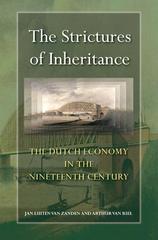All question details attached in image.
. Keep assuming that the rm cannot observe the worker's type, but now consider a dierent situation. Suppose that, out of at] highproductivity students, a fraction 0 secures a job before graduating (possibly due to internships)1 so they don't go into the unemployed poo]. None of the low productivity workers secure jobs before graduating. The rm is considering hiring a candidate who is unemployed some time after graduating. What is the highest wage it should offer to that candidate to avoid negative expected prots? . Denote by 1?: the wage from item 2, and by is\" the wage from item 3. Find an expression for ((16 it\"s)fi] that depends only on pi. and o'. What does that expression means? What happens if or = D or o' = 1? Interpret your results. . Suppose that rms carmot observe workers' types. Suppose a high school student knows for sure they'll be of the low type is choosing between different urnversities. Based on the answer from iwm 3. and assuming that a' is the same at all universities. should this high school student choose a school with a higher or lower share of high productivity students 31*? Why? Hint: a: higher pg does not mean the student wilt team more. The student in this question is sure they '3'! he tour productivity, so pi, (mty effects the student's outcomes due to unohser'ued types at the tuber market. . Now repeat the analysis for a high school student who knows for sure they will be of the high productivity type. Would this student prefer to go to a university with a higher or lower pg? Assume that high productivity workers who get jobs before graduating are paid 10. . 1Winst does your answer to the last two items say about the value of a selective university? 2 Hiring Workers A firm is looking to hire a worker with complete college education. There are two types of such workers: high-productivity, with marginal productivity of 10, and low-productivity, with marginal productivity of zero. Out of all students completing college, a fraction p, has high productivity, and the rest (p: = 1 - ph) have low productivity. The firm is risk-neutral. That is, it only cares about expected profits associated from hiring a worker: the difference between the expected productivity and the wage. 1. If the firm can observe the true type of a worker, how much will it is willing to pay to hire workers of each type (that is, what is the highest wage such that profits are not negative)? 2. Now assume that the firm cannot observe the worker's type. What is the probability that a random job applicant will be a low-productivity worker? Assuming the firm is risk-neutral, what is the highest wage it would be willing to pay for college-educated workers








